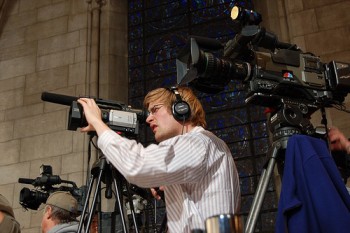Have you found the perfect productivity tool for finishing more projects – and more quickly?
I’ve recently become reacquainted with one that is proving to not only improve productivity, but confidence too. Isn’t that what every process should do?
If you are visually oriented like me, Kanban will help you to see your workflow progress, thereby allowing you to stay focused on what matters now for completing your projects with greater efficiency and speed.
Kanban is a Workflow Improvement Tool
Kanban is a tool that was developed within Toyota to accomplish what is often known as lean manufacturing. In other words, Kanban is fundamental to the concept of Kaizen or continuous improvement.
In the last decade the tool became popular with software development teams. To learn more, check out the book Kanban: Successful Evolutionary Change for Your Technology Business, by David J Anderson. I found a copy at the local library.
As the title suggests, Kanban is intended to help your business evolve its processes to make them increasingly more efficient over time. In my work, it helps me better grasp interdependencies with other team members, and that helps me stay focused on what’s important.
 As one example, in the process of launching my new podcast, I realized having everyone and everything come together just right is like having a house full of kids playing well together! My guests and I have to coordinate before, during, and after interviews, iTunes has to integrate perfectly with my audio media host, and both have to correctly sync with my website.
As one example, in the process of launching my new podcast, I realized having everyone and everything come together just right is like having a house full of kids playing well together! My guests and I have to coordinate before, during, and after interviews, iTunes has to integrate perfectly with my audio media host, and both have to correctly sync with my website.
Here’s a snapshot of the Kanban flow of that project just prior to launching.

This was when we had achieved the minimum necessary requirement for the launch and were only waiting for a green light from iTunes. So, I was able to confidently set that project aside and know that when I returned there was visual plan in place that leaves no doubt as to the next steps.
Project vs Task Orientation
The most basic productivity tool, and an invaluable one at that, is the checklist. The problem with checklists is they tend to be task oriented.
The greatest value of Kanban is the focus on flow, with the most basic Kanban workflow being what needs to be done, is coming next, in progress, and has been completed. That’s the system I’ve been using and it’s working for me quite nicely.
In fact, it occurred to me that when I was operating my landscape business in the days before computers, we used a kanban-like system of index cards on a large bulletin board to organize projects sold, coming up next, in production, and completed and ready for invoicing.
How are you currently organizing your project completion activities?
I’m discovering Kanban is helping me see everything in my business as a project, and that has me thinking bigger. So, instead of working on one sales opportunity, I find myself organizing all of my deals to complete similar tasks together.
This new perspective is streamlining all of my processes for better execution. Being a visual tool, Kanban really does help you see bottlenecks and how activities can be combined. If you put in a little extra effort after completing projects, you will find creating templates or flow diagrams will help to incrementally speed up future projects.
Recommended Kanban Tools
There are plenty of Kanban tools available, with most of them free or nearly so. The one I’m using is Kanbanflow. It’s simple to learn and use. My plan is to upgrade to the premium version for a modest $5/month to have access to more capabilities, such as creating project templates and uploading attachments.
LeanKit is another that was recommended to me. I gave it a try, but it seems to be better suited for larger teams and those that need the more advanced tracking capabilities.
Finally, you may wish to consider Trello. It’s an application that does not strictly adhere to Kanban methods, and that may account for its popularity.
I would love to hear how Kanban is working for you.
About the Author: Jeff Korhan, MBA, is the author of Built-In Social: Essential Social Marketing Practices for Every Small Business and host of This Old New Business podcast.
He helps mainstream businesses adapt their traditional growth practices to a digital world. Connect with Jeff on LinkedIn, Twitter, Facebook, and Google+



